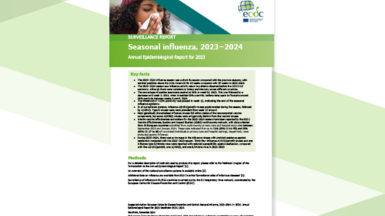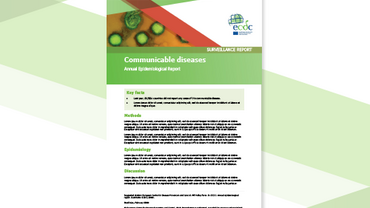Influenza Virus Characterisation, September 2013
In the course of the 2012–13 season, A(H1N1)pdm09, A(H3N2) and B/Victoria- and B/Yamagata-lineage influenza viruses have co-circulated in ECDC-affiliated countries over what was an extended influenza season. The relative prevalences of each virus type/subtype/lineage has varied between countries.• Type A (~60%) and type B (~40%) viruses have been detected in similar proportions but with type A peaking and declining slightly before type B.• A(H1N1)pdm09 viruses have been detected at approximately twice the level of A(H3N2) viruses.• The vast majority of A(H1N1)pdm09 viruses have remained antigenically similar to the vaccine virus, A/California/07/2009, but continued to show genetic drift with an increasing prevalence of genetic group 6 viruses, predominant in the 6C subgroup.• The vast majority of A(H3N2) viruses have been antigenically and genetically similar to cell-propagated A/Victoria/361/2011, a genetic subgroup 3C virus and the prototype vaccine virus for the 2012–13 influenza season; subgroup 3C viruses have circulated exclusively in recent months, and the recommended vaccine virus for the 2013–14 season, A/Texas/50/2012, is in this genetic group.• Viruses of the B/Yamagata-lineage have predominated over those of the B/Victoria-lineage.• B/Victoria-lineage viruses have remained antigenically similar to cell-propagated reference viruses of the B/Brisbane/60/2008 genetic clade.• B/Yamagata-lineage viruses formed two antigenically distinguishable genetic clades: clade 3 represented by B/Wisconsin/1/2010 (the recommended vaccine component for the 2012–13 influenza season) and, in increasing numbers, clade 2 (75% of B/Yamagata detections recently) represented by B/Massachusetts/2/2012 (the recommended vaccine component for the 2013–14 influenza season).






